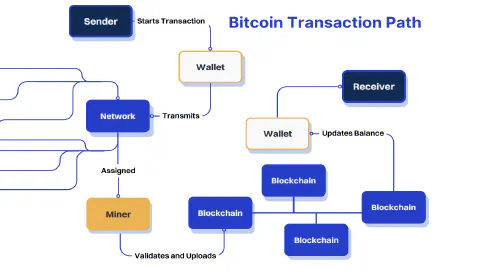Best Edge Computing Use Cases: IoT, Autonomous Vehicles, Retail, Industrial Automation, Healthcare
Salomon Kisters
Jul 10, 2023This post may contain affiliate links. If you use these links to buy something we may earn a commission. Thanks!
Edge computing has become increasingly popular in recent years as individuals and businesses alike recognize its potential to enhance data processing and analysis.
By bringing computing capabilities closer to the source of data generation, edge computing offers several advantages over traditional cloud computing.
In this blog post, we will explore some of the best use cases for edge computing and discuss how it can benefit various industries and applications.
Enhancing IoT and Smart Devices
One of the most prominent use cases for edge computing is in the realm of Internet of Things (IoT) and smart devices. As the number of connected devices continues to increase, traditional cloud architectures may face challenges in terms of latency and bandwidth limitations. Edge computing allows for real-time data processing and analysis at the edge of the network, reducing the dependence on centralized data centers.
Consider a smart home scenario where multiple devices, such as security cameras, thermostats, and voice assistants, are connected. By leveraging edge computing, data from these devices can be processed locally, enabling faster response times and minimizing reliance on the cloud. For example, security camera footage can be analyzed at the edge to detect anomalies or intrusions, triggering immediate alerts on the user’s smartphone.
Empowering Autonomous Vehicles
Autonomous vehicles rely on a multitude of sensors and processing power to navigate and make real-time decisions. Edge computing plays a crucial role in this space by enabling faster data processing and reducing response times, improving the overall safety and reliability of autonomous vehicles.
With edge computing, critical decisions can be made locally within the vehicle instead of relying solely on processing in the cloud. For instance, edge devices in autonomous vehicles can quickly detect and respond to potential hazards, such as pedestrians or other vehicles, without requiring constant communication with a remote data center. This not only enhances safety but also diminishes the reliance on continuous network connectivity.
Augmenting Retail and Customer Experience
Edge computing also offers significant opportunities for the retail industry, particularly in enhancing customer experience. By deploying edge devices within retail stores, businesses can analyze customer behavior, track inventory, and provide personalized offers in real-time.
For instance, edge devices equipped with cameras and sensors can detect customer movement and analyze their shopping patterns. This data can be processed locally to generate personalized recommendations or promotions, offering a seamless and tailored shopping experience. Additionally, with localized inventory management, businesses can ensure adequate stock levels are maintained based on real-time demand, minimizing the risk of out-of-stock situations.
Enriching Industrial Automation and Manufacturing
Edge computing is revolutionizing the field of industrial automation and manufacturing by enabling real-time data analysis and decision-making at the edge of the network. This allows for faster response times and improved operational efficiency in industrial environments.
By deploying edge devices within manufacturing plants, real-time data from sensors and machines can be processed locally to identify potential issues or anomalies. With predictive analytics, edge computing can enable proactive maintenance, reducing downtime and optimizing production schedules. Moreover, edge devices can facilitate collaborative robots, or cobots, by enabling local processing and decision-making, resulting in safer and more efficient human-robot interactions on the factory floor.
Facilitating Telehealth and Remote Patient Monitoring
In the healthcare industry, edge computing plays a critical role in telehealth and remote patient monitoring. By bringing data processing capabilities closer to the patient, edge devices enhance the delivery of healthcare services, especially in remote or underserved areas.
Edge devices can collect and analyze patient data, such as vital signs, securely and in real-time. This enables healthcare providers to remotely monitor patients, diagnose conditions, and provide timely interventions, significantly improving patient outcomes and reducing hospital readmissions. Furthermore, edge computing allows for seamless integration with wearable devices, enabling continuous monitoring of patients’ health and well-being in their everyday lives.
Conclusion
Edge computing offers a multitude of use cases across various industries, empowering real-time data processing and analysis at the edge of the network. From enhancing IoT and smart devices to empowering autonomous vehicles, from augmenting retail and customer experience to enriching industrial automation and manufacturing, and from facilitating telehealth to remote patient monitoring, the potential applications of edge computing are vast and promising.
As technology continues to advance, edge computing will likely become even more prevalent. Its ability to reduce latency, enhance security, and enable real-time decision-making makes it a valuable asset for individuals and businesses alike. By leveraging edge computing, we can unlock new possibilities and innovative solutions, shaping a more connected and efficient futur
Stay informed with the latest insights in Crypto, Blockchain, and Cyber-Security! Subscribe to our newsletter now to receive exclusive updates, expert analyses, and current developments directly to your inbox. Don't miss the opportunity to expand your knowledge and stay up-to-date.
Love what you're reading? Subscribe for top stories in Crypto, Blockchain, and Cyber-Security. Stay informed with exclusive updates.
Please note that the Content may have been generated with the Help of AI. The editorial content of OriginStamp AG does not constitute a recommendation for investment or purchase advice. In principle, an investment can also lead to a total loss. Therefore, please seek advice before making an investment decision.

Top Crypto and Bitcoin Payment Processors - Accept Digital Currencies
Discover the top crypto and Bitcoin payment processors for seamless, secure, and cost-efficient transactions. Easily accept digital currencies, such as Bitcoin and Ethereum, as valid forms of payment. Enhance your business with flexible settlement options and user-friendly integration.

Evolution of Ransomware: From Past to Present - A Comprehensive Overview
Learn about the evolution of ransomware from its humble beginnings in the late 80s to the sophisticated and dangerous attacks we see today.

How to Create a Bitcoin Blockchain Address: A Step-by-Step Guide
Discover the process of generating a Bitcoin blockchain address through our detailed step-by-step tutorial. Get started with cryptocurrency now!
Protect your documents
Your gateway to unforgeable data. Imprint the authenticity of your information with our blockchain timestamp